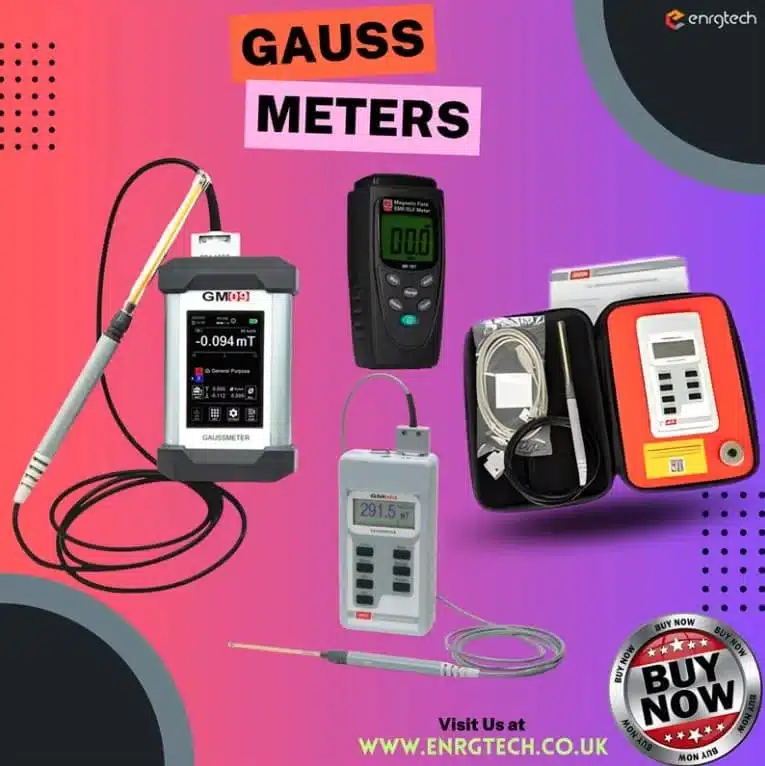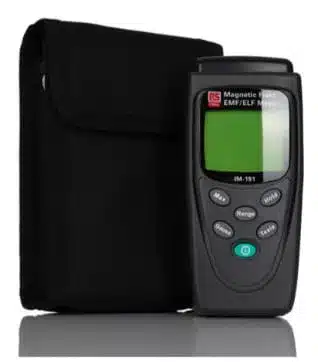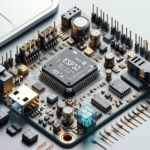
Introduction
The world around us is surrounded by a magnetic field that influences both nature and countless modern technologies. From industrial machinery to everyday electronics, these fields are everywhere. But how do we accurately measure something we cannot see? The answer lies in an indispensable tool—a Gaussmeter that transforms an unseen force into a precise, quantifiable value. This article provides a comprehensive resource for both professionals and beginners, covering all about the vital devices—Gaussmeters.
Defining Gaussmeters: Definition & Core Functions
Gaussmeters, named after the German mathematician and physicist Carl Friedrich Gauss, are specialised test and measurement devices that can measure the strength (often the direction) of a magnetic field. Also referred to as a Tesla meter, a Gauss meter displays readings typically in units of Gauss (G) or Tesla (T), with 1 Tesla equal to 10,000 Gauss. The core function of a gaussmeter is to provide accurate, real-time readings of magnetic flux density, enabling precise monitoring and analysis in various applications. It gives quantitative data to ensure the performance, safety, and efficiency of devices and systems that rely on magnetism.
Exploring the Importance of Measuring the Magnetic Field
Measuring magnetic fields is crucial in both scientific research and practical applications. Accurate measurement, typically using devices like gauss meters, allows a deeper understanding of electromagnetic phenomena and their impact on technology and the environment. By quantifying the magnetic flex density, professionals can detect anomalies, prevent interference, and advance innovations across multiple industries. Additionally, precise measurement also helps engineers design and optimise electronic devices, motors, transformers, and sensors, ensuring efficiency, safety, and reliability.
Gaussmeter vs. Magnetometer: Clarifying the Common Confusion
Many people often confuse gaussmeters and magnetometers, assuming they are interchangeable. However, both these devices serve distinct purposes in measuring magnetic fields. The clarification of confusion between Gauss meters and magnetometers is a matter of scope and common usage. The term magnetometer is the broader, more generic name for any instrument that measures magnetic fields. This includes devices that can detect and measure magnetic fields, often over larger areas, and can provide directional information as well as field intensity. Conversely, a gaussmeter is a specifically denoted device designed for measuring stronger, localised magnetic fields. It can be a benchtop or handheld instrument that employs a Hall-effect sensor. Essentially, a gaussmeter is technically a type of magnetometer, while “magnetometers” is a broader term.
Most Popular Types of Gauss Meters & Their Uses Explained
Gaussmeters come in various types, each suited for specific applications and environments. The most common types are:
- Handheld Gaussmeters
Handheld gaussmeters are portable devices that provide a convenient way to measure magnetic fields in the field or in the lab. They are lightweight, easy to use, and ideal for spot checks in areas where larger equipment cannot reach.
- Digital Gauss Meters
Digital gaussmeters are the most commonly used models that offer high accuracy and easy-to-read digital displays. They can measure both static and varying magnetic fields and are widely used in both research and industrial applications.
- Analogue Gauss Meters
Although less common today, analogue gaussmeters still offer precise readings for some specific applications. They feature a needle that moves along a scale, providing real-time magnetic field strength readings. These meters are typically used in specialised fields where a continuous, dynamic readout is necessary.
- Benchtop Gauss Meters
Benchtop models feature a stable platform, advanced digital displays, and multiple measurement ranges for both DC and AC magnetic fields. Commonly used in research, quality control, and calibration applications, they provide precise readings for materials testing, sensor calibration, and magnetic component evaluation.
Limitations to Be Aware Of Using a Gauss Meter
A gaussmeter is subject to several key limitations. It is essential to recognise these limitations that can influence measurement accuracy and reliability. One primary limitation is environmental interference that can distort readings. Temperature fluctuation can affect sensor activity and calibration stability. Moreover, operator handling, probe orientation, and distance from the magnetic source can significantly alter readings. Other limitations include angle and position relative to the magnetic field lines, calibration deviations, and instrument range and resolution, all of which can contribute to inconsistent results.
Calibrating a Gaussmeter: Why Is It Important?
Over time, even high-quality instruments like a gauss meter can experience drift in internal components, leading to inaccurate results. This drift can be due to environmental factors or mishandling. This is where calibrating a gaussmeter is critical to ensure its accuracy and reliability. Regular calibration detects and corrects the deviations in the instrument. It maintains the device’s functionality and traceability, prevents costly manufacturing errors and downtime, and ensures personnel safety. Additionally, accurate calibration also supports compliance with quality assurance standards in various environments.
Final Thoughts
Gaussmeters are specialised instruments that offer high accuracy, portability, and versatility in measuring magnetic fields. They are available in various models and cater to distinct industrial and scientific needs; however, they also come with certain limitations. By recognising these constraints and properly calibrating, professionals can ensure accurate and reliable readings across industries. Ultimately, the accurate and successful measurement of a magnetic field relies on the proper selection of a gaussmeter, knowledgeable application, and meticulous maintenance.























